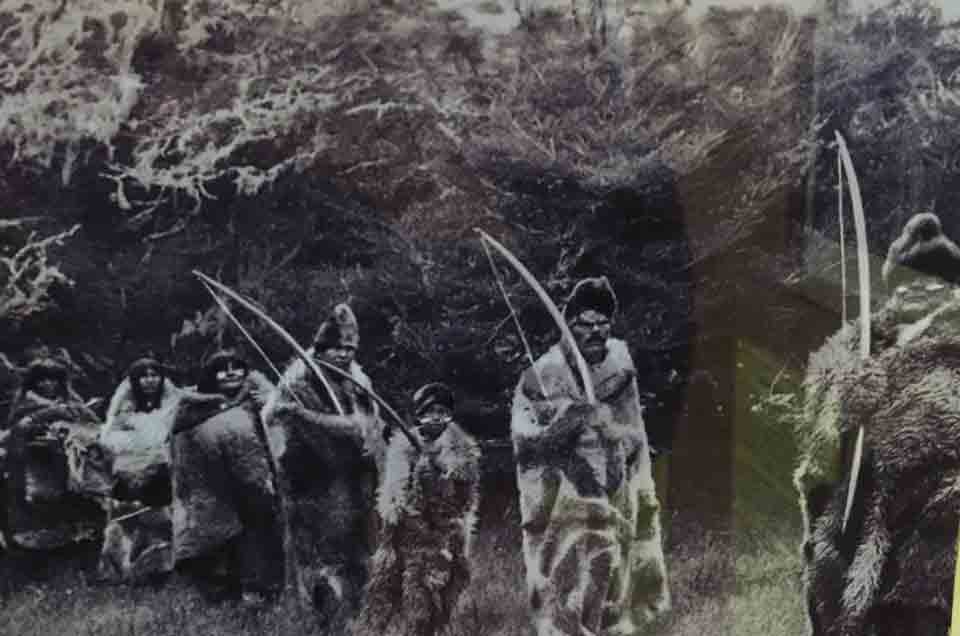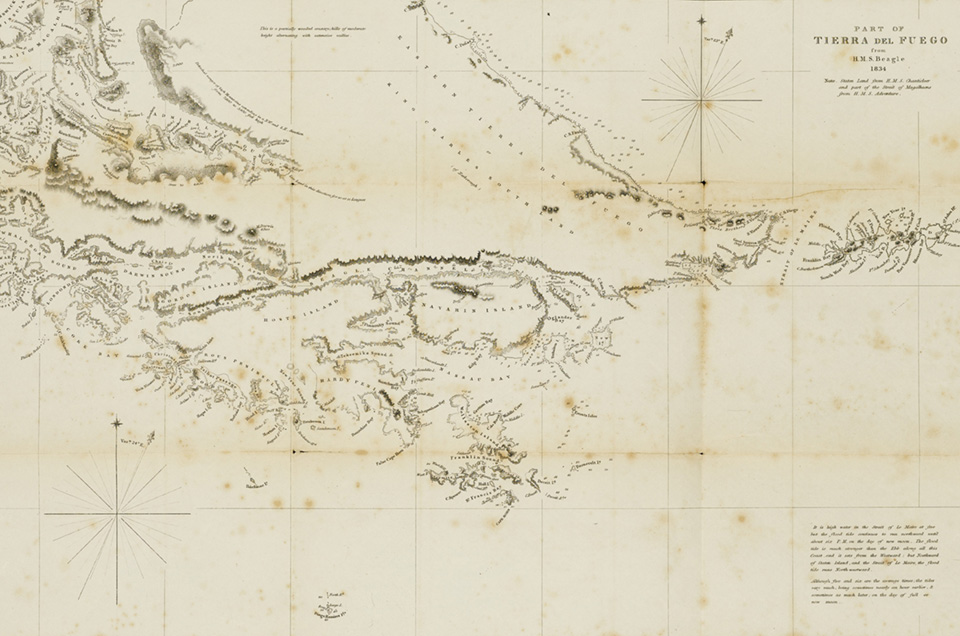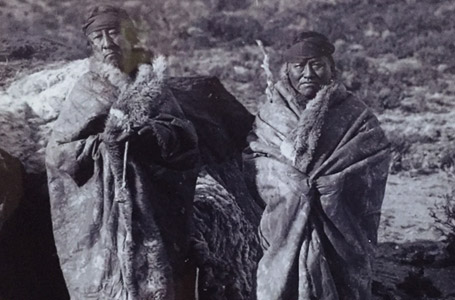
Archeological findings reveal that Patagonia and the Tierra del Fuego was inhabited by native peoples as far back as 4,500 years ago. These native tribes are commonly referred to as ‘Tehuelche tribes’ or ‘Fuegians’ but actually refer to a number of separate groups with their own unique dialects and traditions. Here, these nomadic people roamed desolate landscapes and endured the tough climate while hunting wildlife and marine life for survival.
While some native tribes of Patagonia were largely land-based, others relied on canoes to traverse the labyrinth of channels and waterways around the Tierra del Fuego. Charles Darwin reported seeing such people in his travels and noted that many wore little to no clothing, even in the snow. Instead, they stayed warm by covering themselves in fats and oils from fish and other animals to protect themselves from biting temperatures and winds. Additionally, they often lit a fire in the back of their canoes to keep warm while traveling over chilly waters. These reports are what led to the Tierra del Fuego, ‘Land of Fire’.

On the Patagonian mainland, the native tribes were distinctively different from the coastal dwellers. Here, early explorers talked of giant people who roamed the land, hunting Guanacos with bow and arrows. They dressed in the heavy furs of their prey, made leather shoes to keep their feat warm for traveling in the snow and adorned their bodies with jewelry made from bones and other artifacts. The Spanish often feared these people for their size and their war-like tendencies referring to them as ‘Patagones’ or ‘giants’ which again, lead to the naming of Patagonia itself as the ‘land of the giants’.



While the information historians have been able to gather from ancient artifacts and cave drawings reveal that the people of this land were strong, enduring and well-adapted to the harsh climate, unfortunately, the influx of Europeans to the area lead to the eventual decline of these native people. Foreign disease to which they had low immunity mixed with alcohol, the increase demand on food sources and war with the new settlers wiped out a large majority of the population over less than 100 years.
While it is believed that there are some people left with blood ties to the native tribes of Patagonia and the Tierra del Fuego, mixing with the Spanish and European cultures has eroded their traditional cultures further, leaving us merely with tales of encounters that add to the mystery and intrigue of these native peoples.
Today, visitors to Patagonia and the Tierra del Fuego unfortunately won’t see much evidence of these native tribes of Patagonia and all the indigenous groups. However, experiencing the harshness of this landscape and learning about the culture that once was will give you a great appreciation of the great adaptations that these people made to live in such an incredible, yet severe and unforgiving landscape.
To learn more about the strange folklore native tribes of Patagonia and the Tierra del Fuego, visit our Patagonia history page.
-
Just want to add to this section …”, unfortunately, the influx of Europeans to the area lead to the eventual decline of these native people. Foreign disease to which they had low immunity mixed with alcohol, the increased demand on food sources and war with the new settlers wiped out a large majority of the population over less than 100 years.” We, the new habitats of Patagonia, want to reconnected and bring to the light the native people of this land were killed with guns and authorization of Chilean and Argentina Governments. Few families, hold the power and the economy of the region. Back in the day you can get pay for earns or breast of the habitants of this land. The Salesians missioners of that time withness this and they create a National Reservation in Dawson Island where the Onas, Yaganes, Tehuelches, Kawesqar can be save of this persecution… I encourage you to do a major search and helps to say the truth of what happened to our ancestral people. Muchas Gracias – Eve
-
Most indigenous Americans trace back to the Beringia migration. Do you know if any indigenous Patagonian peoples trace their origins back through Pacific islanders?
-
Hi Ken if you want more information about that theme a recomend you look for this articule “Beyond Kon-Tiki: Did Polynesians Sail to South America?”
-
-
Is the large stature of inland tribes confirmed? Which tribes? 4500 years is relatively recent compared to the rest of the continent. Are there indications of the ancestry of these tribes?
-
There are indications the East Africans that settled Australia 70,000 years ago also settled South America. Not Pacific Islanders but very similar to Australian Sbiriginals in appearance, culture and hunter gathering lifestyle. I’d bee looking for genetics connections to that.
-


